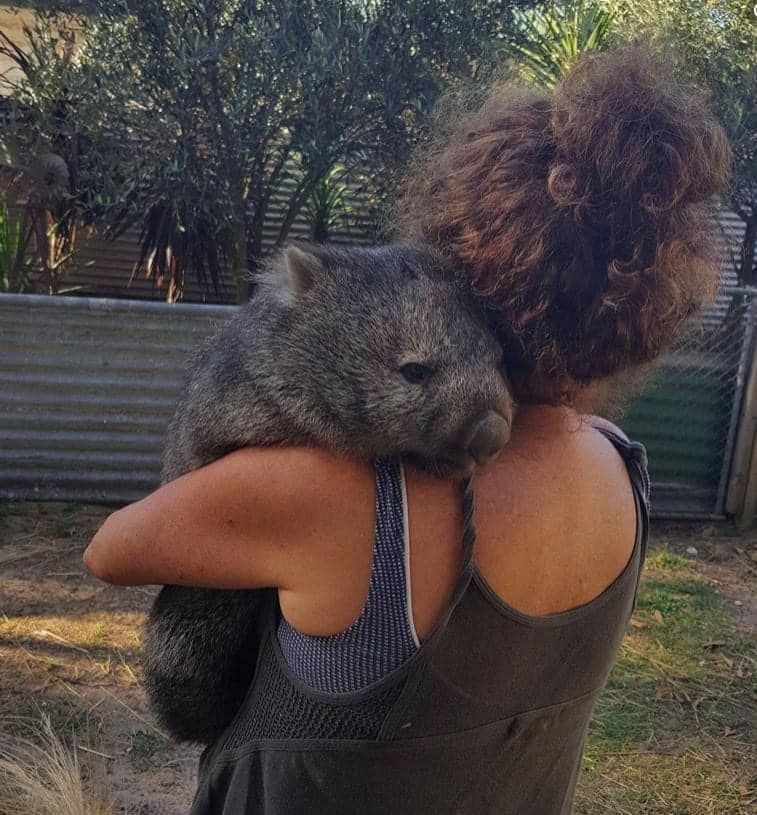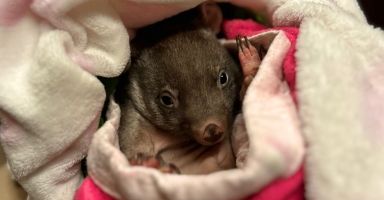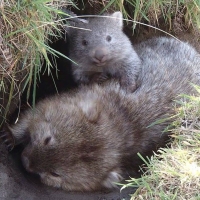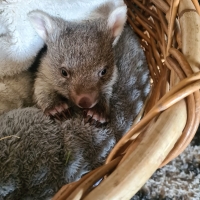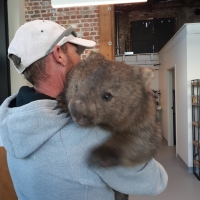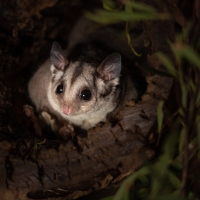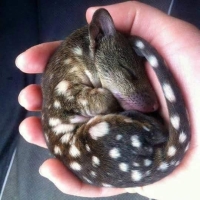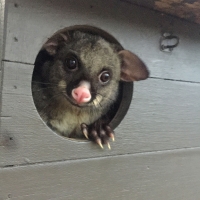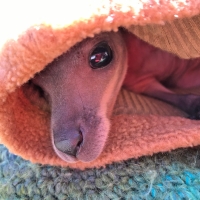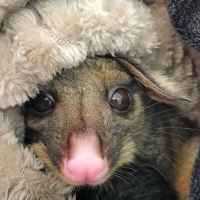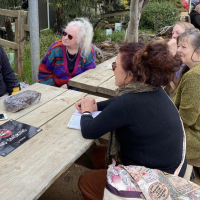Dr Liz Charpleix
When driving in Tasmania it is impossible not to see the impact of humans on wildlife. Just go for a drive on any country or outer suburban – or even inner suburban – road and count the bodies.
Many of us seem not to notice these deaths, except as “messes” on the road. We know that humans can be rude and even deliberately cruel to strangers on social media, because we don’t know them and literally don’t see them as being like us. For similar reasons, many people are heartless towards wildlife who have no choice but to traverse the roads we build through their homes.
We see them, but we don’t emotionally connect with them. We don’t see them as living beings who have “selves” like we humans do. We know our domestic pets have selves, that they have feelings and form real emotional connections. They can be deliberately funny and silly and loving; anyone who’s ever had a pet of their own knows this.
Because of these traits, we care about domestic animals, even if they’re not our own pets.
If we saw a dog running across the road, we would firstly try to avoid hitting it, and secondly (depending on how busy we feel) possibly stop to try and catch the dog. We would understand that the dog probably has a human family worrying about them.
Because there might be children and other pets missing them, their life matters.
Now think about a pademelon frozen in the headlights of an approaching car, only to suddenly make a beeline for the opposite side of the road, right into the path of our car. Do we think, “Oh, no, a living being with a family somewhere out there in the bush – a living being that will suffer if I hit them with my car”? And if we do hit them, unable to avoid their sudden leap into our path, do we think (as we would for a dog), “Oh, no, I’ve hit an animal.
I’ve got to stop and see if they’re OK, see if they need help”?
If we don’t see a sentient animal, with feelings – at the very least, feelings of physical pain – we might just keep driving. But if we take a minute to think about that animal and imagine that it was a dog or cat we hit, we might realise that the pademelon’s sentience is on a par with that of our pets or even ourself.
Just like us, they bleed, their broken bones hurt, they have their own families who will notice – and might die – if they never get home.
To reduce the toll on wildlife in Tasmania, WACT support mitigation strategies including establishment of wildlife corridors, better signage, awareness campaigns for drivers, and encouraging involvement from government, communities and individuals.
You can do your bit by driving more slowly in the early evenings and at night, and by stopping to check on any animal you do hit. In Tasmania, call the wildlife rescuers at Bonorong Wildlife Hospital and Rescue on 0447 264 625 for advice and assistance.
Vicki Hawker
Being a Wildlife rehabilitator is incredibly rewarding, but it can also be time-consuming, and emotionally challenging.
Taking care of wildlife is very different from looking after a domestic pet like a cat or a dog. Our wildlife species are incredibly unique and so need special enclosures and very specific diets.
Caring for any native species requires specialised knowledge and experience and all carers must complete training before being able to register as a Wildlife Carer.
Caring for wildlife is often an around-the-clock job. Young animals may need to be fed several times a day and, in the case of joeys and baby birds, often through the night as well, so their milks will need to be prepared or food and vegetation for older animals collected in advance.
Jude Lennox
Just like human babies, native animal joeys need lots of love and care. They need to be toileted after every feed and their pouches changed and washed regularly, sometimes several times each day.
Hygiene is very important, with equipment needing to be sterilised and hands washed thoroughly to decrease the chance of any infection. In the case of older animals, cages and bedding need to be changed and cleaned daily.
Some animals require months of care before being ready to return to the wild, but some may take longer… in excess of a year.
Being a wildlife carer, our primary role is to rehabilitate wildlife, giving them the best chance at survival so that they can be returned to the wild.
Sadly, not all the animals that come into care will be able to make the journey with us. The reality is that many animals die. Often, they are too sick or too young to make it through, and some injuries simply can’t be treated, sometimes they just don’t have the will to live without their natural environment. Being a Wildlife Carer can be tough. Losing a joey that we love and care for is heart breaking.
There is no denying that being a Wildlife Carer can be challenging, but we focus on caring for these vulnerable little souls, earning their trust, watching them grow and seeing them successfully released back into their natural habitat.
Being a Wildlife Carer is such a privilege!
Fiona Connolly and her 92 year old mother Marie Connolly
"We’ve been rescuing for more than a decade and have noticed a huge increase in the number of animals needing help on our roads. Sadly, a huge volume of these animals don’t die quickly and often suffer for days on the sides of roads or in ditches before being rescued, most with catastrophic injuries and at times with joeys on board.
Their fear in coming into contact with humans so closely on rescue can be so traumatic for them and sometimes they die of what’s known as capture myopathy on the way to help.
We see the worst and the best of human behaviour when out rescuing. We’ve nearly been run down on occasions trying to help wildlife in difficult locations by people that didn’t care and wouldn’t slow even for a human. And then you’d get the people pulling over to help, which actually happens a lot. And then there’s people like our friend Jenny, who recently stopped to help a platypus on the road and paid severely for that act of kindness.
We’re so glad she did because the little platypus is out there living his life again.
Not sure what the answer is but we must keep getting the word out there for people to slow down and care about our precious wildlife. There will always be a small majority of people that really don’t care but I’m thankful there’s way more caring people in our State that will change their driving behaviours.
Being a rescuer is so incredibly rewarding and yes it can be challenging too, especially on your mental health, however with so many animals now needing our help, I urge anyone with a love of wildlife to do the Bonorong course and become a rescuer. You won’t regret it.
Kim Rettig
My connection and attitude towards wildlife injuries caused by vehicle strikes occurred many years ago when I responded to a Bonorong Wildlife Rescuer call-out one chilly winter morning. What had been a beautiful big healthy possum had been struck by a car on a small dirt road near Woodbridge.
It was clear that no one had checked to see if the animal was still alive when it was hit. Thankfully a kind passerby noticed it was still breathing and called the Bonorong Wildlife Rescue Service.
I attended and found the female possum face-down on the road and suffering from a fractured pelvis, amongst other injuries. She had been lying in the cold icy snow for many hours, quite possibly the whole night and was almost frozen, however I could see by her trembling body that she was still breathing.
I collected her as gently as I could and took her to the closest vet to be euthanised suffering such catastrophic injuries. The degree of suffering this innocent animal had endured, affected me deeply. Something inside me changed that day, I no longer saw a native animal on the side of the road as a commonplace event. This is a sad reality for way toomany Tasmanian native animals.
I decided I needed to do something, that all of us can do something.

